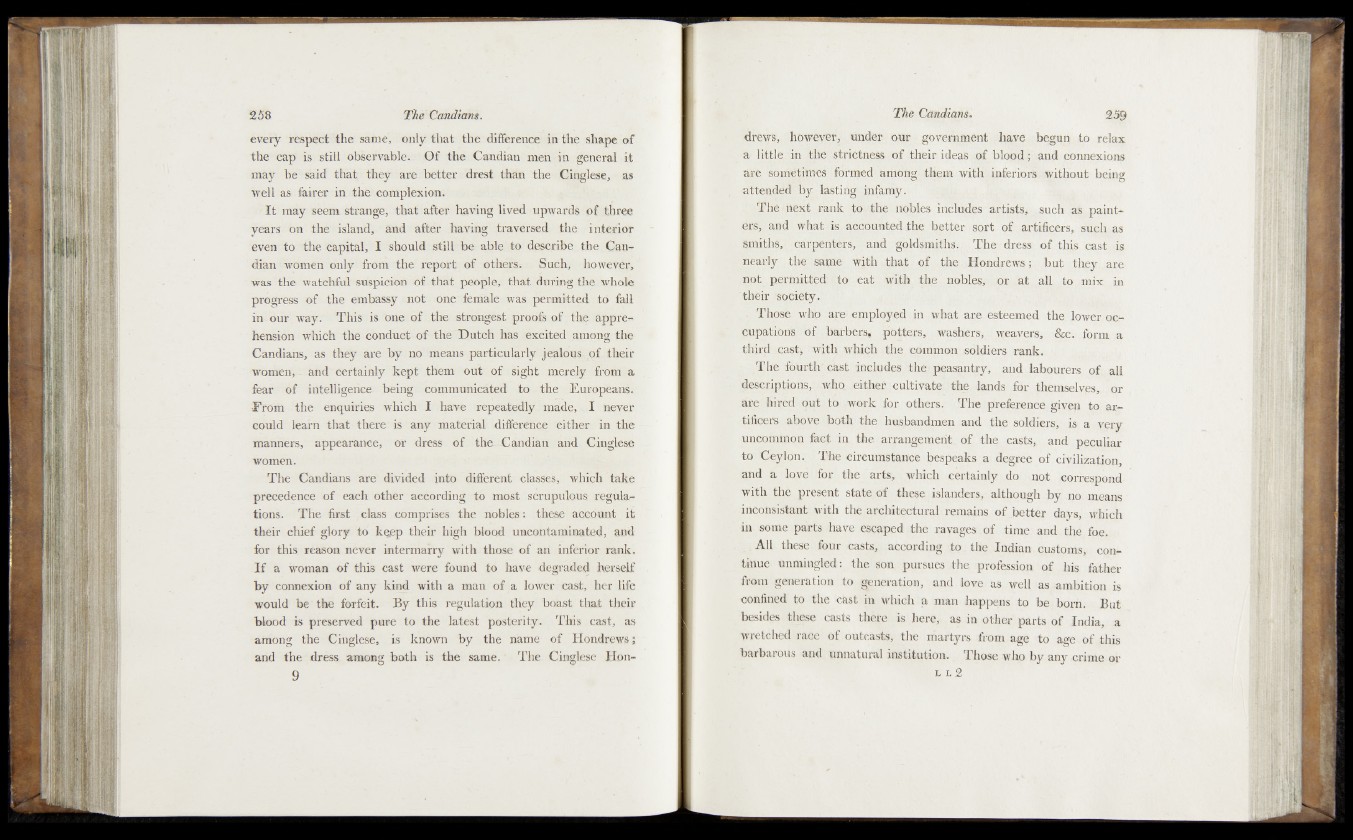
every respect the same, only th at the difference in the shape m
the cap is still observable. Of the Caaidian men in general it
may be' said that, they are better drest than the Cinglese, as
well as lairer in the complexion.
I t may seem strange, that after having lived upwards o f three
years on the island, and after haying traversed the interior
even to tih e capital, I should still be able tfco describe the Gan-
dian women only from the report of others; Such, however,
was the watchfift suspicion of that people, that during the 'whole
progress ®f. the embassy not one female was permitted to fail
in our way. This is one of the strongest proofs of the appre-
hension which the conduct-of theTDluteh has excited .among th e
Candians, as they are by no means particularly jealous of their
women,- and certainly kept them oufpoft sight merely from-a
fear of intelligence being communicated- h a b ile Europeaibi,
From the enquiries which I have repeatedly made, s. I never
could learn that there is any material diffeEiue® either in the
manners, appearance, or dress o f the Candian and Cinglese
women.
The Candians are divided into different classes, which take
precedence of each other according to most scrupulous regulations.
The first class comprises the nobles : these aoediant it
their chief glory to keep their high blood uneontaminated, and
for this reason never intermarry with those of an inferior rank.
I f a woman of this cast were found to have degraded herself
by connexion of any kind with a man of a lower cast, her life
would be the forfeit. By this regulation they boast that their
blood is preserved pure to the latest posterity. This cast, as
among the Cinglese, is known by the name of Hondrews;
and the dress, among both is the same. The Cinglese Hon-
9
^drews, h o w ^ y t t v o u r |ghvednfl^ot have begun to rela^
a little in the strictness of their ideas of blood; and connexions
are sometimes formed among timai with inferiors without being
■attended'by. lasting, infamy.
The-next rank t©- the nohl&s, includes artists* such as painters,
and , what is accounted the better sort of artificers, suph as
smiths, carpenters, and goldsmiths. The dress of this cast,,is
nearly^tbo same With that of -the Hondrews;
not p.ermitfced|||o:ijieatt with the noblesyjj^pr .at all ,to mix in
'their 'society.
; Those whp are; employed in what are-esteemed the lower occupation!
of barbers, potters, washers*.. weavers,. Sfc. form a
tMrd iCa^'s -with which the common soldiers rank.
; ^The fourth' ckst includes the - peasantry, and labourers of all
descriptions, .who. either cultivate the -lands for themselves, j; or
are hired put tb | work jfor others. The preference givgp to artificers
aboVe both the husbandmen and the soldiers, is a very
uncommon feet in tile arrangement, of .the casts, and .'peculiar
to Ceylon. £ » 8; circumstance bespeaks a-degree of civilization,
and a love for the arts, which certainly do n o t correspond
wit^.t^q present state of tiiep. islanders,although by no means
iaeohsistant with the architectural remains of better days, which
in some parts have escaped the ravages, of time and the.foe.
AIL these four casts,, according tQ.the Indian customs, continue
unmiagled^ the son pprsaCs 4he profession of his fether
from generation to generation, and love as well as ambition is
confined to the cast in which a man happens to be born. But
besides these casts there is here,, as in other parts of India, a
^retched race of outcasts, the martyrs from age to age of this
barbarous and unnatural institution. Those who by any crime or
l l 2